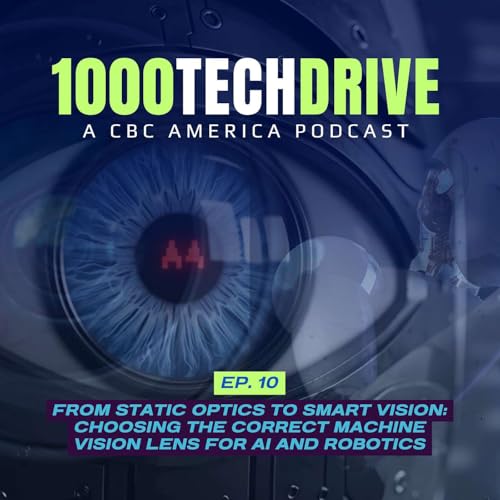
1000 Tech Drive
カートのアイテムが多すぎます
ご購入は五十タイトルがカートに入っている場合のみです。
カートに追加できませんでした。
しばらく経ってから再度お試しください。
ウィッシュリストに追加できませんでした。
しばらく経ってから再度お試しください。
ほしい物リストの削除に失敗しました。
しばらく経ってから再度お試しください。
ポッドキャストのフォローに失敗しました
ポッドキャストのフォロー解除に失敗しました
-
ナレーター:
-
著者:
-
CBC AMERICA
このコンテンツについて
Welcome to 1000 Tech Drive, your go-to podcast for all things optics and surveillance technology! Each episode, we’ll take you on a journey through industry trends and dive into the innovative products from CBC AMERICA’s Computar and Ganz brands. Our goal? To arm you with valuable insights and practical advice that you can apply directly to your industry applications.
What to Expect:
- Product Advice: Discover expert tips and recommendations on selecting and optimizing products for your specific needs.
- Technical Data Insights: Simplify complex specifications and performance metrics to help you make informed decisions.
- Case Studies: Learn from real-world applications that showcase how businesses across various sectors effectively leverage Computar and Ganz products to enhance efficiency, security, and automation.
Tune in to 100O Tech Drive and stay ahead in the rapidly evolving world of optics and surveillance technology!
© 2025 1000 Tech Drive
エピソード
-
 11 分
11 分カートのアイテムが多すぎます
ご購入は五十タイトルがカートに入っている場合のみです。カートに追加できませんでした。
しばらく経ってから再度お試しください。ウィッシュリストに追加できませんでした。
しばらく経ってから再度お試しください。ほしい物リストの削除に失敗しました。
しばらく経ってから再度お試しください。ポッドキャストのフォローに失敗しました
ポッドキャストのフォロー解除に失敗しました
-
 13 分
13 分カートのアイテムが多すぎます
ご購入は五十タイトルがカートに入っている場合のみです。カートに追加できませんでした。
しばらく経ってから再度お試しください。ウィッシュリストに追加できませんでした。
しばらく経ってから再度お試しください。ほしい物リストの削除に失敗しました。
しばらく経ってから再度お試しください。ポッドキャストのフォローに失敗しました
ポッドキャストのフォロー解除に失敗しました
-
 2025/10/1021 分
2025/10/1021 分カートのアイテムが多すぎます
ご購入は五十タイトルがカートに入っている場合のみです。カートに追加できませんでした。
しばらく経ってから再度お試しください。ウィッシュリストに追加できませんでした。
しばらく経ってから再度お試しください。ほしい物リストの削除に失敗しました。
しばらく経ってから再度お試しください。ポッドキャストのフォローに失敗しました
ポッドキャストのフォロー解除に失敗しました
まだレビューはありません



